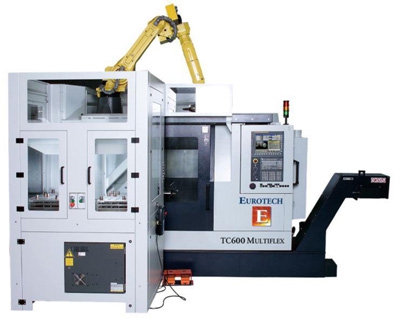
Eurotech is adding to its dynamic multi-axis machine tool line with European made Spinner CNC Turning machines. The introduction of this advanced CNC line to the U.S.A. is in response to the growing demand for advanced multi-axis turn/mill machines that complete precision machined parts in one operation.
"Our machines are proven to increase productivity, reduce costs and give you optimal processes for your machining requirements. Like Eurotech, we bring to the market the most advanced technology. Through Eurotech's training college we will offer free program training and lifetime support to all customers. We look forward to working with Eurotech and bringing the high precision of Spinner to the U.S.A. market," said Robin Buchsein, sales manager, North America for Spinner.
When high precision and reliability are required, the Eurotech multi-axis machines meet the demand and give its customers fast, accurate machines. Eurotech's new line offers the same speed, accuracy and innovation that has become the standard of Eurotech Elite, according to the company. Like Eurotech's current line of precision multi-axis turn/mill machines, this new line is not just assembled. The machines are built from the group up, from pouring the castings, building the turrets, to painting the machines.
"Without a doubt, the Spinner line will help us give our customers the superior technology that they have come to expect. Based on our machine backlog, we anticipate the TTC300 and TC600 to be the most popular models and are stocking those models immediately," said Jeff Walz, president of Eurotech.
Contact Details
Related Glossary Terms
- computer numerical control ( CNC)
computer numerical control ( CNC)
Microprocessor-based controller dedicated to a machine tool that permits the creation or modification of parts. Programmed numerical control activates the machine’s servos and spindle drives and controls the various machining operations. See DNC, direct numerical control; NC, numerical control.
- turning
turning
Workpiece is held in a chuck, mounted on a face plate or secured between centers and rotated while a cutting tool, normally a single-point tool, is fed into it along its periphery or across its end or face. Takes the form of straight turning (cutting along the periphery of the workpiece); taper turning (creating a taper); step turning (turning different-size diameters on the same work); chamfering (beveling an edge or shoulder); facing (cutting on an end); turning threads (usually external but can be internal); roughing (high-volume metal removal); and finishing (final light cuts). Performed on lathes, turning centers, chucking machines, automatic screw machines and similar machines.







